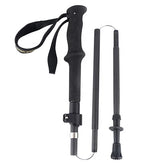The Carbon Fiber Revolution: Comprehensive Applications of High-Performance Materials from Steering Wheels to Hard Hats
Why Carbon Fiber Has Become an Industry Favorite
Carbon fiber composites are reshaping standards across multiple industries with their exceptional strength-to-weight ratio. Composed of carbon atom crystals, this material is five times stronger than steel yet only a quarter of its weight, while also offering outstanding corrosion resistance and fatigue properties. From F1 racing to aerospace to premium sports equipment, carbon fiber applications continue to push boundaries.
1. Carbon Fiber Steering Wheels: Track Technology Empowering Everyday Driving
Three Advantages from Material Properties
-
30-50% Weight Reduction: Significantly decreases steering inertia and improves vehicle dynamic response
-
Vibration Damping Characteristics: Effectively filters out undesirable road vibrations
-
Customization Potential: Can incorporate composite materials like Kevlar and aluminum alloys
Purchasing Guide
-
For competition-grade products, focus on fiber layup angles (±45° is optimal)
-
Street versions must ensure airbag compatibility
-
Surface finish options: matte/glossy/3D texture
2. Carbon Fiber Hard Hats: Redefining Industrial Safety Standards
Breakthrough Technical Specifications
-
40% improved impact resistance (EN397 standard testing)
-
UV stability exceeding 2000 hours
-
Optional integrated smart sensor modules
Industry Application Cases
-
Ventilated carbon fiber helmets adopted by Tesla's Gigafactory
-
Pressure-resistant versions for deep-sea operations (withstanding 50 atmospheres)
3. Carbon Fiber Pool Cues: The Secret Weapon of Professional Players
Physical Performance Comparison
| Parameter | Traditional Maple Cue | Carbon Fiber Cue |
|---|---|---|
| Energy Transfer Efficiency | 78% | 93% |
| Humidity Deformation Rate | ±2.1mm | ±0.3mm |
| Service Life | 1-2 years | 5+ years |
Maintenance Tips
-
Use specialized nano-coating care solutions
-
Avoid sudden extreme temperature changes
-
Regularly check joint screw threads
4. Carbon Fiber Wheels: The Art and Science of Lightweighting
Key Technological Breakthroughs
-
Automated fiber placement (AFP) technology ensures structural consistency
-
Military-grade resin systems withstand temperatures up to 180°C
-
Dynamic balance tolerance controlled within 0.5g
Modification Considerations
-
Must use matching titanium alloy bolts
-
Recommend fiber condition inspection every 5,000 km
-
Special anti-salt corrosion measures required in winter
Future Outlook: The Next Decade of Carbon Fiber Technology
Latest MIT research indicates that with developments in carbon nanotube reinforcement technology and recyclable resin systems, next-generation carbon fiber products may see 40% cost reduction and 25% strength improvement. Breakthroughs in bio-based carbon fiber are also expected to achieve commercial production by 2026.
Conclusion
Carbon fiber products have transitioned from specialized fields to mass markets, with their performance advantages establishing new user experience benchmarks. Whether you're pursuing millisecond-level competitive improvements or reliable protective equipment, carbon fiber solutions can deliver qualitative leaps. We recommend consumers select certified products based on actual needs to fully realize the potential of this revolutionary material.















